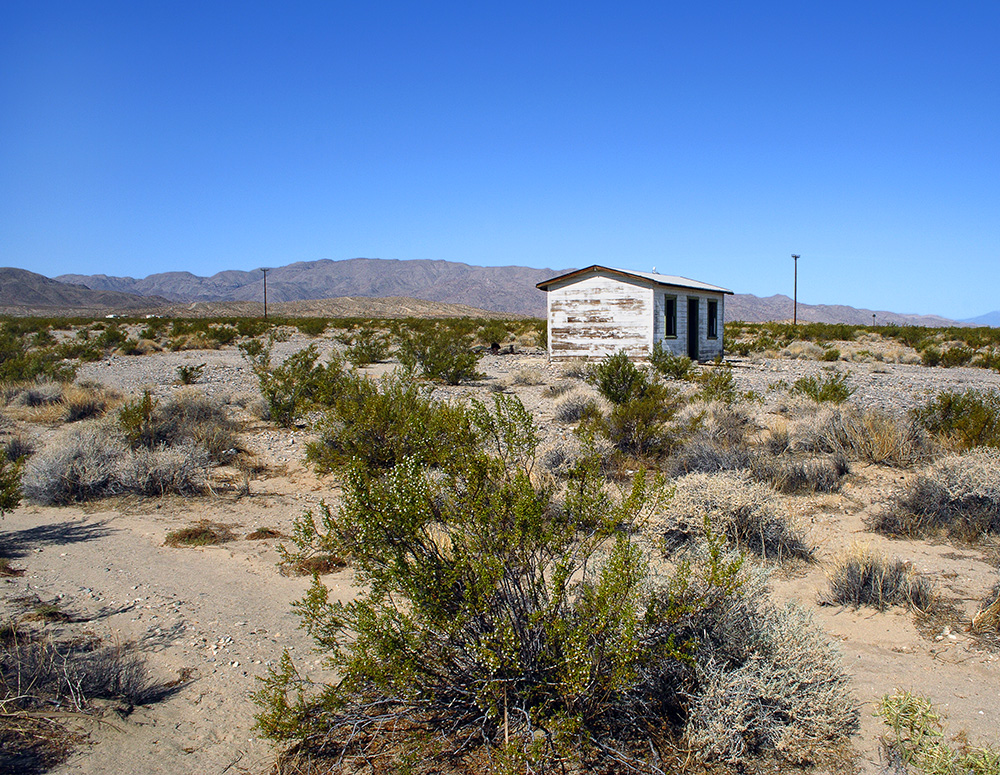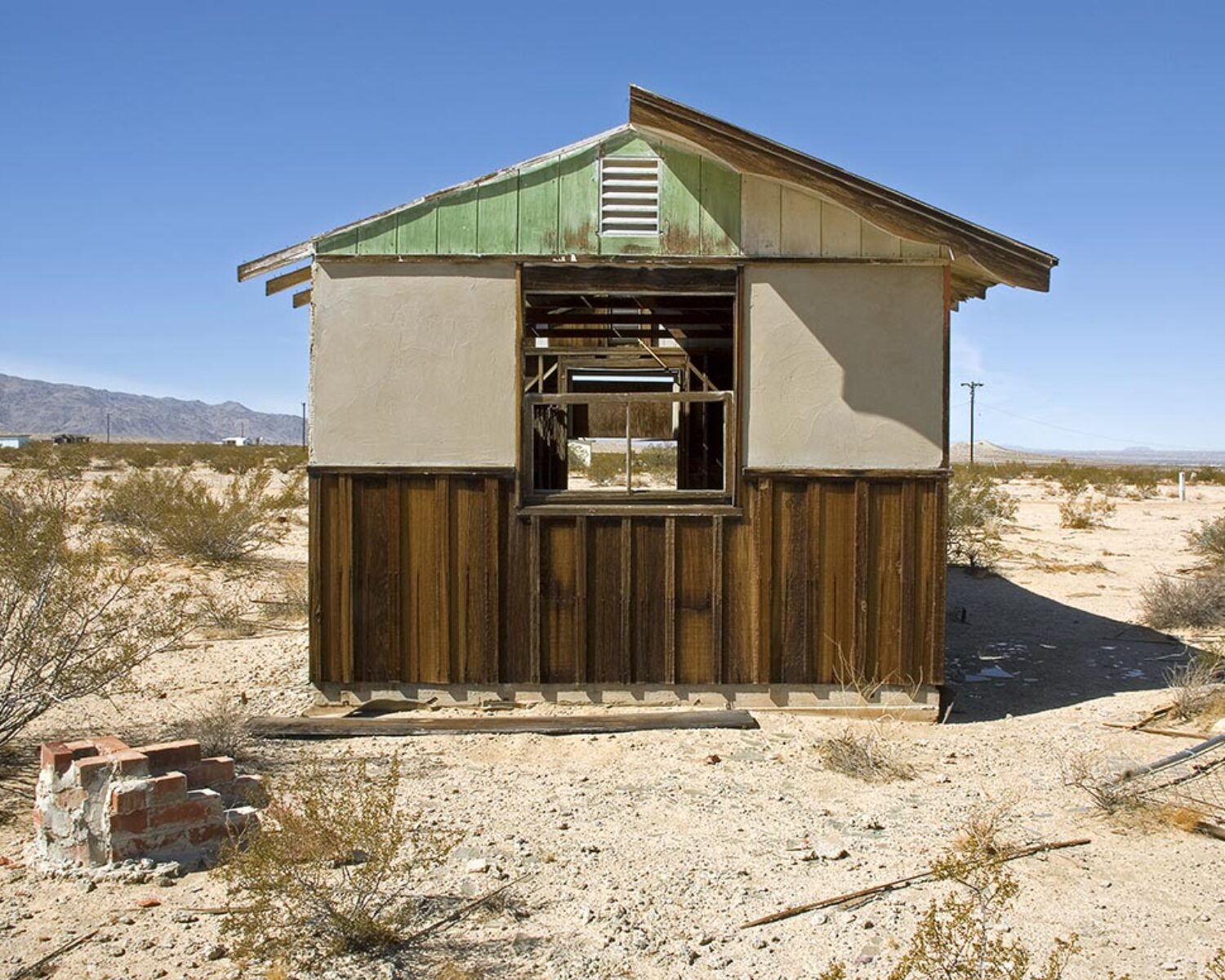What are all those little shacks?
BEYOND THE PROLIFERATION of big-box chains, car dealerships, fast food joints, and the nameless sprawl located along California State Highway 62 the desert opens up. Out there, where signs of familiar habitation seem to fade from view, a variance appears on the horizon in the form of small, dusty cabins—mostly abandoned and scattered across the landscape. The majority of the existing shacks, historically found throughout the larger region known as the Morongo Basin, lie east of Twentynine Palms in outlying Wonder Valley. The curious presence of these structures indicates that you are entering one of the remaining communities of “jackrabbit homesteads” left in the American West. The mostly derelict structures located among the occasional inhabited ones are the remaining physical evidence of former occupants who were some of the last to receive land from Uncle Sam for a nominal fee through the Small Tract Act of 1938.
One of the many land acts designed to dispose of “useless” federal lands from the public domain, the Small Tract Act authorized the lease of up to five acres of public land for recreational purposes or use as a home, cabin, camp, health, convalescent, or business site to able-bodied U.S. citizens. When the applicant completed the necessary improvements to their claim by constructing a small dwelling within three years of the lease, the applicant could file for a patent—the federal government’s form of a deed—after purchasing the parcel for the appraised price (on average $10 to $20 an acre) at the regional land office. This highly popular mid-twentieth-century homestead movement reflects the quintessential American desire to claim territory and own a piece of the land even if the property in question is deemed “worthless” from an economic and governmental perspective. Continue reading –>
View the KCET Artbound short film on Jackrabbit Homestead produced in 2012.











































